This quote by Benjamin Franklin captures the dynamic shift we have seen in education over the last 10 plus years. Educators at every level have transformed curriculum, re-imagined learning spaces and embraced new technologies all with the goal of increasing student engagement. Involving students in the learning process has become one of the most powerful tools we have in education today. Mr. Franklin would be impressed. And yet as we return to the classroom in these uncertain times, we risk losing many of the powerful benefits that students experience when they have the opportunity to collaborate, to move, to explore and to engage with others. The social and emotional benefits of being with fellow students is also a critical component of student engagement.
As we consider our return to school, we need to look at both immediate as well as long-term solutions that will continue to foster engagement while keeping our children and teachers safe. The following are suggestions and ideas that can help your institution:
We will also be working with numerous experts in their field with the goal of providing useful insights and strategies that can help institutions navigate this challenging time. Please check back here to have access to these resources as they are added. We are here to help and hope we can provide useful insights that will help create safe and engaging learning environments for your students and teachers.
By John Myers, Director of Marketing and Training, Haskell Education
Communities across the country are faced with many challenges as they consider re-opening their schools in a Covid-19 world. As a designer and manufacturer of furniture solutions for learning environments we care deeply about the well-being of today’s students and the amazing educators who lead and guide them. We understand the value that in-class learning can have where students can connect, explore and experience. Learning, Thinking and Doing have taken on new meaning in todays student centered learning environments. It is critical to their emotional, mental and physical well-being.
By Anna Iversen, MS, LMFT
2020 has been a year of transition. Uncertainty has been the cornerstone of this season as we navigate through challenges brought on by Covid-19 this past February. This has greatly increased anxiety related to health and stability, losses of various kinds and a general lack of ability to make concrete plans. Restoring safety and predictability is a primary focus in the process of reopening education this fall to best support the emotional and social wellbeing of our Students.
By Aaron Mensik, Creative Director, Textile Designer
Trends in interior design and architecture are always shifting, driving innovation in the design of materials and surfaces. Now more than ever the blending of residential feeling furniture into our institutional and corporate spaces has created the need for more durable yet well-designed upholstery materials. The good news is that there are many options available today that will meet the challenge. Creating beautiful spaces that will stand the test of time is easy with the selection of the right materials.
Its clear that many schools are considering strategies that will limit classroom sizes with aspects of social distancing in place. As we progress beyond this we will return to more normalized student groupings.
Flexible and agile furniture combined with strategies that can help create safer learning environments will not only serve us well now but can be adapted for the future ensuring the highest level of student engagement possible.
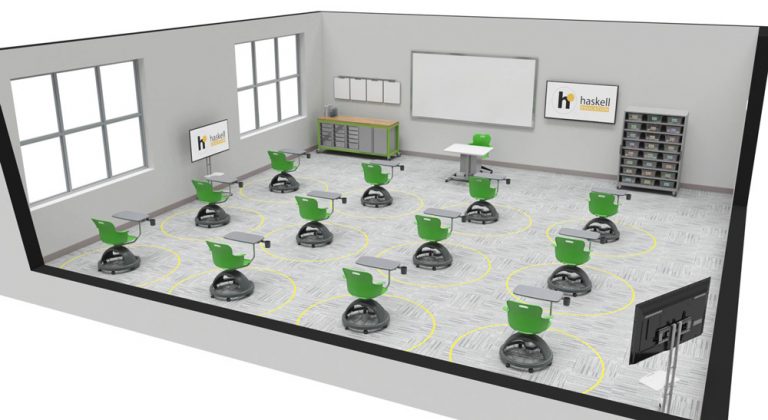
Reduce classroom sizes to promote distancing
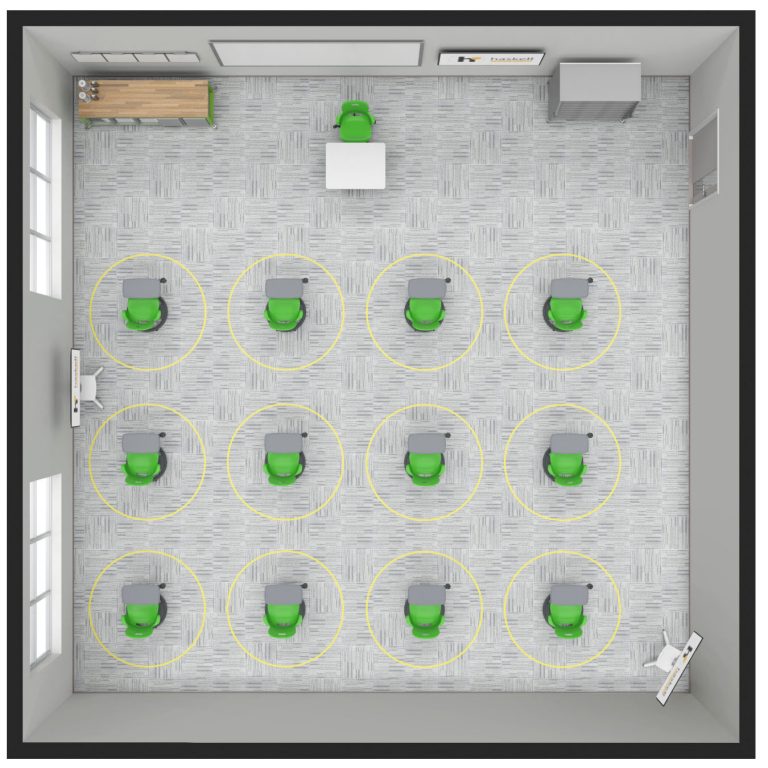
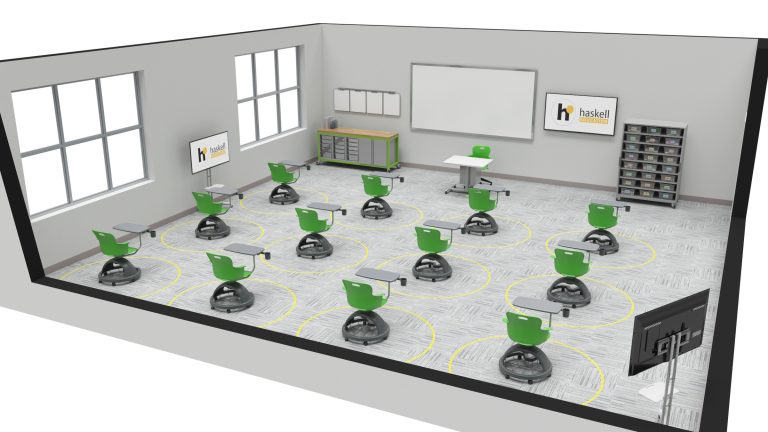
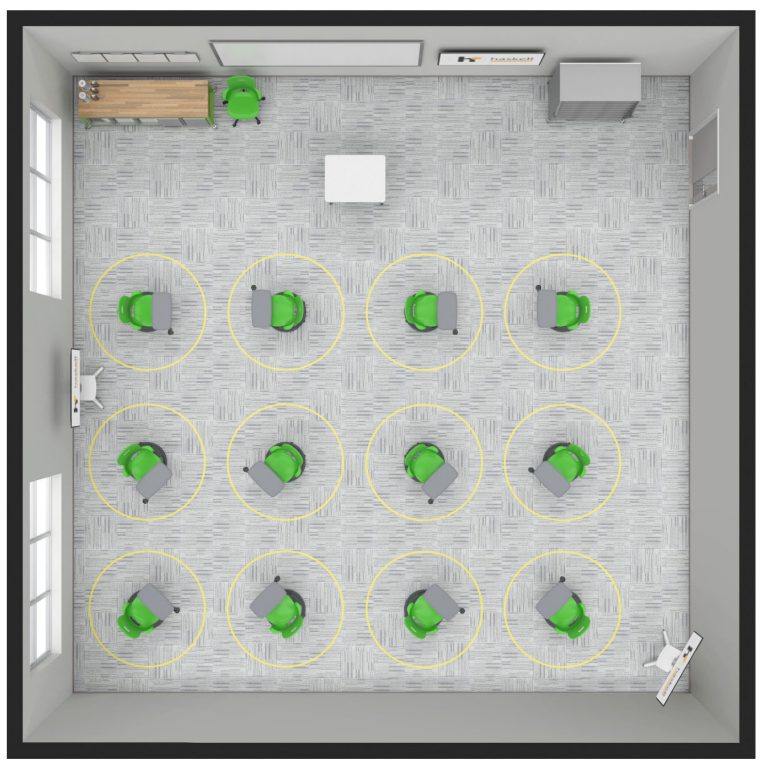
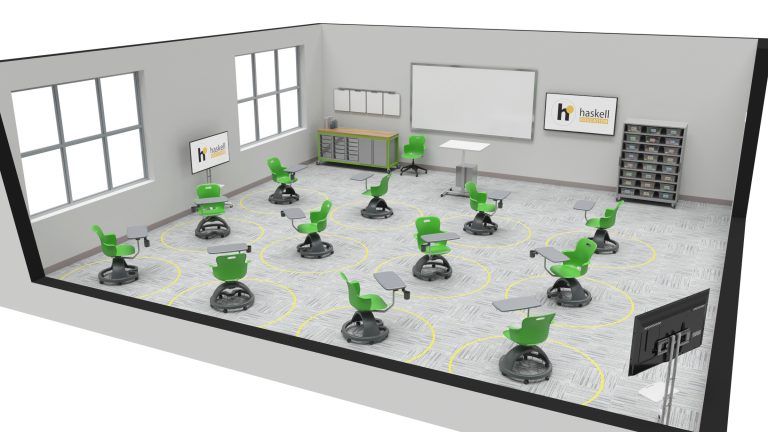
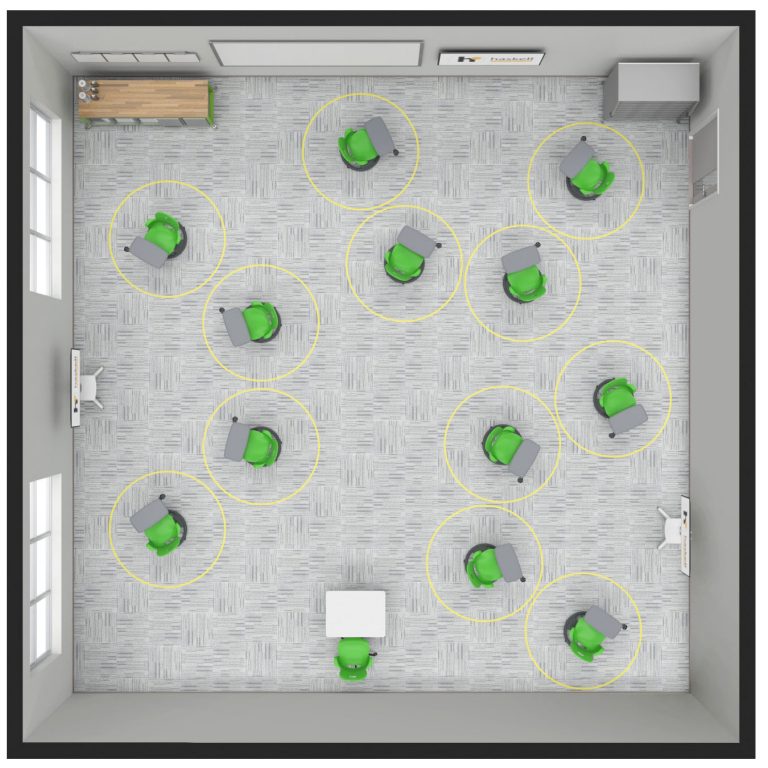
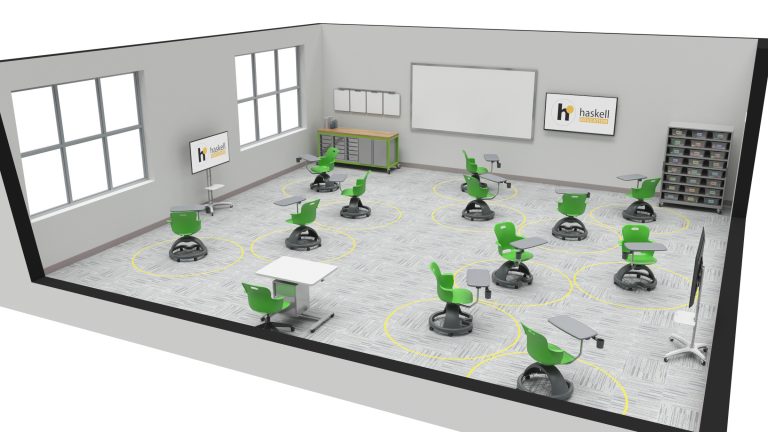
As we re-open schools and re-imagine the new classroom, its critical to keep in mind the importance of engagement. Allowing students to move, to fidget and to experience varying levels of coloration and “doing”…making can still be achieved with the right tools.
With respect to spatial distancing schools may look to temporary solutions such as re-purposing spaces like gyms and cafeterias into flexible learning environments.
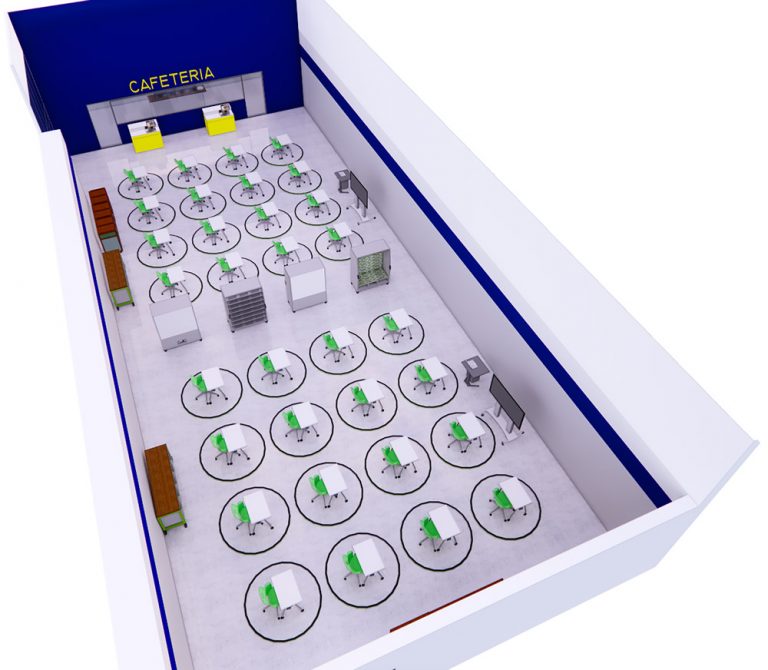
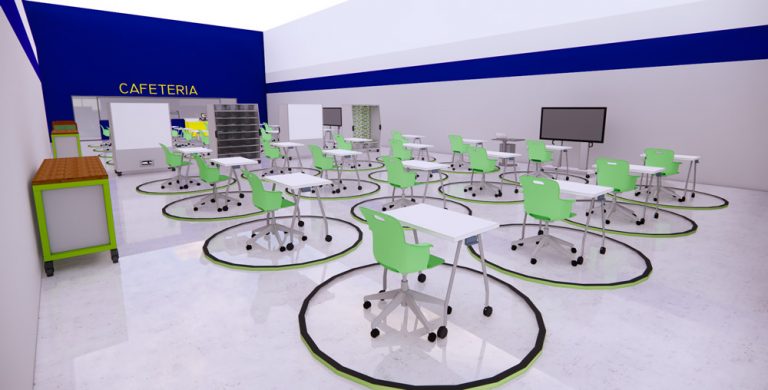
Cafeterias can be temporarily converted to learning spaces with flexible furniture
With flexible furniture, moving classrooms out doors becomes easier and allows students to benefit from movement and exposure to nature, which has been proven to have a very positive impact on our brains and creativity.
Flexible, agile furniture can help re-shape your learning spaces to meet the immediate needs of distancing while supporting movement and engagement. As circumstances permit, these assets can be expanded in their use to encourage greater collaboration.
To learn more about Haskell solutions for education, please complete the form. If you wish to speak with our sales team now, please call 1-800-334-8888.